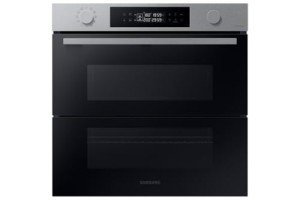7 Secrets About Build In Oven That Nobody Can Tell You
The Ultimate Guide to Built-in Ovens: Enhancing Your Kitchen Experience
Built-in ovens have actually become a popular choice in modern cooking areas, providing a blend of functionality, style, and convenience. Unlike traditional freestanding ovens, built-in ovens are integrated flawlessly into cabinets, providing a streamlined appearance that can boost the aesthetic appeal of any kitchen. This article checks out the various kinds of built-in ovens, their advantages, installation considerations, and upkeep tips.
Comprehending Built-in Ovens
Built-in ovens are designed to be set up directly into kitchen cabinets, enabling a more customized kitchen setup. gas hob electric oven built in come in two primary types: single and double ovens.
Kinds Of Built-in Ovens
Single Ovens: These systems provide one cooking compartment, ideal for smaller sized cooking areas or homes where cooking demands are modest.
Double Ovens: As the name recommends, these units feature 2 separate cooking compartments, permitting users to prepare multiple meals at different temperature levels all at once. This is especially helpful for large families or those who frequently amuse visitors.
Steam Ovens: These ovens cook food using steam, which can assist retain wetness and nutrients. Steam ovens are getting appeal due to their health benefits.
Combination Ovens: These flexible appliances combine the functions of a regular oven and a microwave, making them best for fast cooking and reheating.
Secret Features to Look For
When considering a built-in oven, there are numerous functions that can enhance your cooking experience:
Smart Technology: Many modern-day built-in ovens come equipped with clever innovation, permitting users to manage their oven remotely by means of smartphone apps. Functions include pre-heating the oven, changing cooking times, and keeping track of cooking development.
Self-Cleaning Functions: Built-in ovens with self-cleaning abilities can conserve effort and time in kitchen maintenance.
Convection Heating: This feature distributes hot air for even cooking, making it perfect for baking.
Security Features: Look for designs geared up with features like cool-to-the-touch oven doors and automated shut-off alternatives for added security.
Advantages of Built-in Ovens
Visual Appeal: Built-in ovens provide a smooth and modern appearance that can improve the general design of a kitchen. They can be integrated into kitchen cabinetry, making them less intrusive than freestanding models.
Space Efficiency: Built-in ovens enhance kitchen space, especially in smaller sized kitchen areas where every inch counts. They can be put at eye level, making it simpler to keep an eye on cooking without flexing down.
Improved Functionality: With their advanced functions, built-in ovens use enhanced cooking experiences and increased performance compared to traditional ovens.
Setup Considerations
Setting up a built-in oven needs cautious preparation and factor to consider. Here are some bottom lines to remember:
Space Requirements: Ensure that the selected oven fits comfortably into the readily available cabinet space. Measure the measurements precisely, representing ventilation and clearance requirements.
Electrical Requirements: Built-in ovens generally need a dedicated electrical circuit. Speak with an electrical contractor for appropriate installation.
Ventilation: Proper ventilation is vital for optimal oven efficiency. Confirm that the setup location has appropriate ventilation to prevent overheating and ensure safe operation.
Professional Installation: While DIY setup might appear appealing, employing the help of a professional can guarantee that the oven is set up properly and safely.
Installation Steps
Setup Step
Description
Action 1: Measure
Measure the cabinet opening for your oven.
Action 2: Prepare
Prepare the electrical outlet and ventilation alternatives.
Step 3: Connect
Connect the oven to power, making sure all precaution are followed.
Step 4: Secure
Protect the oven within the cabinets, utilizing proper screws and brackets.
Step 5: Test
Run a test to guarantee the oven is working effectively.
Upkeep Tips
Regular upkeep can extend the life of your built-in oven and ensure ideal performance. Here are some upkeep ideas:
Clean Regularly: Wipe down the oven outside and tidy the interior routinely. Usage self-cleaning functions where available.
Check Seals: Ensure that door seals are intact to preserve efficiency and cooking performance.
Display Performance: Pay attention to how your oven functions— if you notice irregular cooking or uncommon noises, it might need expert servicing.
Follow Manufacturer Guidelines: Always abide by the upkeep guidelines supplied by the maker. This can assist prevent problems and guarantee that service warranties remain valid.
FAQs about Built-in Ovens
What is the difference in between a built-in oven and a freestanding oven?
- Built-in ovens are integrated into cabinets, using a structured appearance, while freestanding ovens are standalone appliances that can be positioned anywhere in the kitchen.
Do built-in ovens need more upkeep than routine ovens?
- Not necessarily. Upkeep depends on use and cleansing practices more than the type of oven. Routine care is vital for all ovens.
Can I set up a built-in oven myself?
- While it is possible to set up a built-in oven yourself, it is suggested to work with a professional to make sure safe and precise installation, specifically relating to electrical requirements.
What are the typical costs of built-in ovens?
- Costs can vary significantly based on brand, features, and specifications. Basic models might begin around ₤ 800, while high-end models can surpass ₤ 3,000.
Are built-in ovens energy-efficient?
- Lots of modern-day built-in ovens are designed to be energy-efficient. Search for designs with an ENERGY STAR certification for the best efficiency.
In conclusion, built-in ovens are an excellent addition to any modern-day kitchen, combining visual appeals with performance. By comprehending the various types of built-in ovens, their functions, and the associated setup and upkeep requirements, property owners can make an informed choice that boosts their cooking experience and total kitchen design. As cooking innovation progresses, built-in ovens are most likely to play an integral role in the future of home cooking areas, ensuring tasty meals are prepared with ease and convenience.
